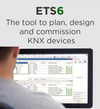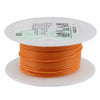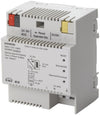- Your one stop shop for KNX devices in the USA 🇺🇸
- (+1) 786 956 6821
- support@knxsupply.com
- Store Location
- Sign in or Register
- Home
-
Categories
- System Devices
- Switching/Shutter Actuators
- Dimming Actuators
- HVAC
- Binary Inputs
- Keypads
- Gateways
- Enclosures and Boxes
- Occupancy Sensors
- Visualization Systems and Touch Panels
- Weather Sensors
- Drivers and ECGs
- Special Sensors
- HVAC
- Accessories
- Cable
- Expert Picks
- KNX Certified Training
- Newest Products
- Best Selling Products
Brands
- Articles
- Contact Us
- Home
- All Collections
- Gateways
Gateways
KNX Module for Raspberry Pi.
Application area
The KNX BAOS Module 838 kBerry is an extension board for the Raspberry PI® single-board computer.
It can be plugged directly on the Raspberry board and serves as a serial interface to KNX.
BAOS stands for “Bus Access and Object Server”.
So the module allows the access to the KNX bus on telegram level (KNX Link Layer) as well as on data point level (KNX Application Layer).
The connection between application and KNX BAOS Module is established via a UART connection (FT1.2 framing).
For a quick start a generic ETS® entry with 1000 group objects is available.
Individual ETS entries can be created as well.
The KNX BAOS Module 838 is powered via the bus and provides galvanic isolation.
The firmware of the KNX BAOS Module 838 is fully compatible with the KNX BAOS Module 830.
With KNX IP interface, bus powered.
Application area
The KNX Modbus TCP Gateway 716 secure is a compact gateway between KNX TP and modbus TCP with 250 freely configurable datapoints.
The device enables easy integration of modbus devices that support the TCP protocol via IP and can act as a modbus master or slave.
As master the device can address up to 5 slave devices.
The assignment between KNX objects and modbus registers can be configured via parameters in the ETS
without an additional tool.
Two buttons and three LEDs allow local operation and visualization of the device status.
Furthermore, the device can be used as a programming interface to connect one or more PCs to the KNX bus (e.g. for ETS®).
Power is supplied via the KNX bus.
The device supports KNX Security.
KNX Modbus Gateway with 250 data points.
Application area
The KNX Modbus RTU Gateway 886 is a compact Gateway between KNX TP and Modbus RTU with 250
freely configurable channels.
The device enables easy integration of Modbus devices that support the RTU protocol via RS-485 and can act as a Modbus master or slave.
As Master the device can address up to 25 slave devices.
The assignment between KNX objects and Modbus registers can be configured via parameters in the ETS
without an additional tool.
The gateway provides a galvanic isolation between KNX bus and Modbus.
Two buttons and three LEDs allow local operation and visualization of the device status.
Interface and ObjectServer between LAN and KNX Bus.
Application area
The KNX IP BAOS 777 integrates a web server for the KNX installation.
This allows the visualization in a web browser on a PC or mobile device.
The email function allows the notification e.g. in case of an alarm.
The integration of a Date & Time Server (NTP) allows to obtain date and time automatically via the Internet
and to synchronize the KNX installation.
Extensive time functions offer a powerful KNX time switch with week function.
The configuration is done with the ETS software.
Gateway between KNX DMX512.
Application area
The KNX DMX Gateway 544 is a compact gateway between KNX and DMX512 (protocol for lighting control) with up to 64 freely configurable channels.
In master mode, the device allows convenient control of DMX luminaires, for example with KNX push-buttons.
Up to 64 dimming channels or up to 8 RGB/RGBW channels are available.
Several subsets of DMX512 addresses can be assigned to each channel.
The dimming channels enable dimming of one or more DMX devices via KNX.
In addition, 4 sequencers are available in the gateway to carry out more complex tasks.
In slave mode KNX actuators can be controlled by DMX.
For example, the room lighting, which is part of the KNX installation, can be controlled via a DMX lighting control panel.



























